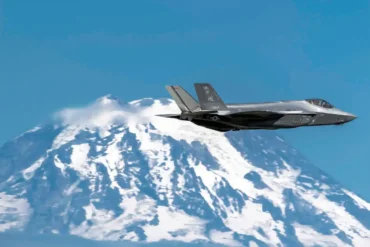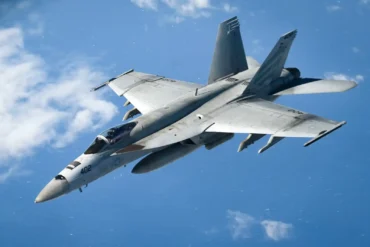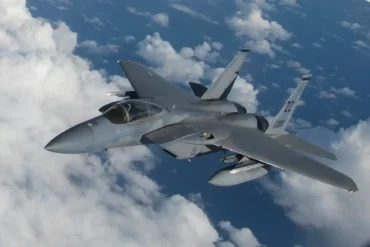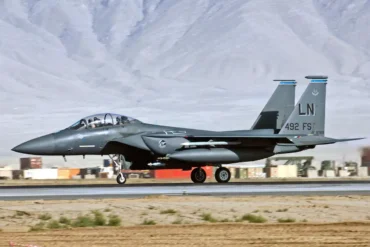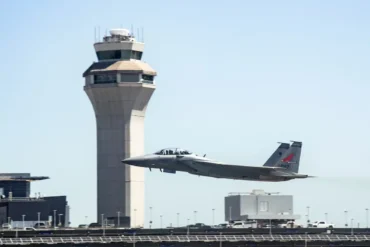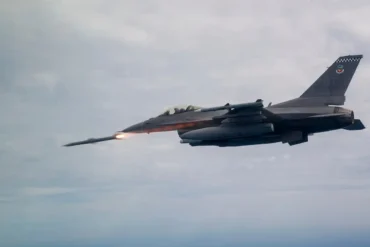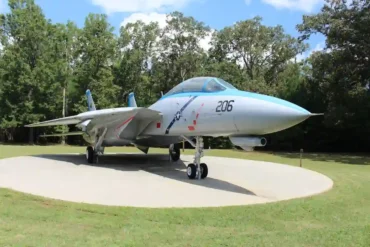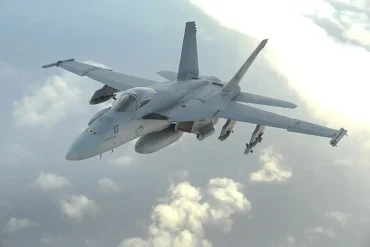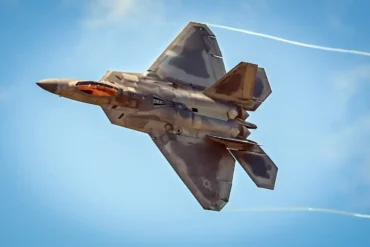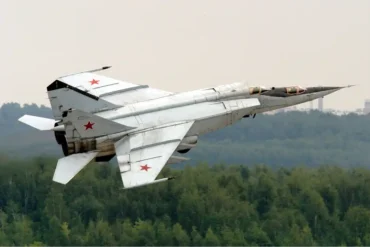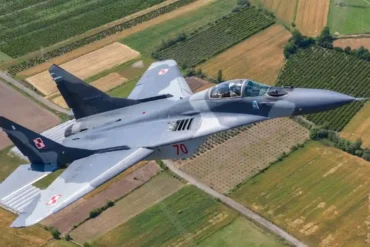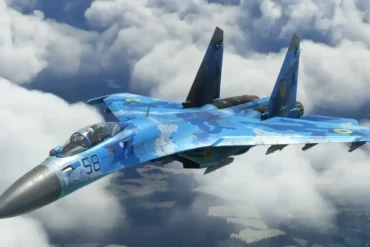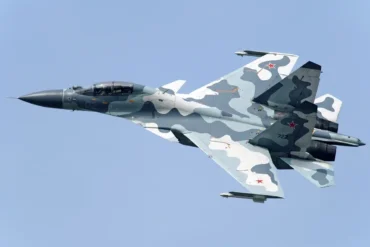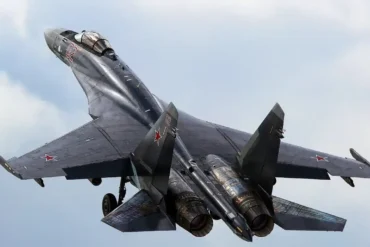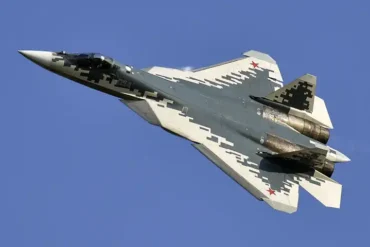The F-35A Lightning II is a remarkable multi-role fighter jet, designed by Lockheed Martin. It boasts unparalleled capabilities in air-to-air and air-to-ground combat, intelligence, surveillance, and reconnaissance (ISR) missions. Among its many exceptional specifications, one of the key performance indicators is its top speed. This metric offers insight into its capabilities at high altitudes and low altitudes, essential for various tactical situations.
In this article, we explore the top speed of the F-35A Lightning II across different conditions, providing the specific figures in Mach, kilometers per hour (km/h), and miles per hour (mph). We also dive deeper into the aircraft’s design, performance, and how its speed fits into the broader context of its mission profile.
F-35A Lightning II: Speed Specifications
The F-35A Lightning II has been designed for a balance between speed, agility, and stealth. The aircraft can achieve a top speed of Mach 1.6 at high altitude, which translates to approximately 1,200 mph (1,930 km/h). At sea level, it can maintain a speed of Mach 1.06, equivalent to 806 mph (1,296 km/h). This impressive speed allows the F-35A to dominate the skies, intercept hostile aircraft, or escape unfavorable situations when necessary.
Here are the key speed specifications in various units:
- Mach 1.6 at high altitude
- 806 mph or 1,296 km/h at sea level
Top Speed in Mach
At high altitudes, where air resistance is lower and the jet is performing under optimal conditions, the F-35A can reach Mach 1.6, which is approximately 1,200 mph. This speed is achieved with the help of its advanced engine, the Pratt & Whitney F135-PW-100 afterburning turbofan. This powerplant generates up to 43,000 lbf (190 kN) of thrust, allowing the F-35A to break the sound barrier and sustain supersonic speeds for extended durations.
Top Speed in Kilometers per Hour (km/h)
At high altitudes, the top speed of the F-35A reaches 1,930 km/h, or roughly 1,200 mph. This makes it a highly capable aircraft for high-speed interception and precision strikes, particularly in scenarios where speed is critical to mission success.
Top Speed in Miles per Hour (mph)
At sea level, the F-35A’s top speed reaches 806 mph (1,296 km/h), where the aircraft is still able to operate at near-supersonic speeds. This is a crucial attribute for low-level strike missions, especially when quick penetration through enemy defenses is required.
Aircraft Design: How Speed Fits into the F-35A’s Performance
The F-35A’s design is centered on versatility, stealth, and aerodynamic efficiency, all of which contribute to its impressive speed. The combination of a lightweight structure, powerful engine, and advanced aerodynamic features enables the jet to excel in speed without compromising other aspects of performance.
Powerplant and Thrust-to-Weight Ratio
At the core of the F-35A’s speed is its Pratt & Whitney F135-PW-100 engine. The engine is capable of generating 43,000 pounds of thrust with afterburners engaged, making it one of the most powerful engines in its class. The thrust-to-weight ratio, which is 0.87 at gross weight, further underscores the aircraft’s ability to achieve remarkable speeds.
The high thrust-to-weight ratio enables the F-35A to accelerate quickly and maintain its speed during rapid changes in altitude or direction. This makes it an ideal platform for combat situations requiring both high speed and maneuverability.
Aerodynamics and Wing Design
The wingspan of the F-35A is 35 ft (11 m), with a wing area of 460 square feet (43 m²). The aircraft’s sleek design and optimized aspect ratio of 2.66 contribute to its aerodynamics, minimizing drag and maximizing speed potential.
In addition to these factors, the F-35A’s ability to maintain supercruise—sustaining speeds greater than Mach 1 without the use of afterburners—further enhances its operational versatility. Supercruise allows the F-35A to operate at high speeds while conserving fuel, a crucial advantage for extended mission ranges.
High-Altitude Performance
At high altitudes, where atmospheric conditions are more favorable, the F-35A can reach its maximum speed of Mach 1.6. The thin atmosphere at these heights reduces drag, enabling the aircraft to fly faster and more efficiently. The F-35A’s ability to reach such speeds at high altitudes plays a critical role in high-speed interception and long-range strike missions.
Stealth Design and Speed
One of the standout features of the F-35A is its stealth capabilities. The aircraft’s design minimizes radar cross-section (RCS) and infrared signature, making it difficult to detect by enemy radar. This stealth, combined with its high speed, makes the F-35A a formidable adversary in contested airspaces.
While speed is crucial for evading threats, the stealth aspect allows the F-35A to approach its targets undetected. This synergy of speed and stealth gives the aircraft a tactical edge, whether conducting air-to-air combat or precision air-to-ground strikes.
Speed and Mission Role
The F-35A’s top speed is not just a performance metric—it directly influences the aircraft’s combat mission capabilities. Speed, coupled with the aircraft’s multi-role design, makes it highly adaptable in a wide variety of operational environments.
Interception and Air Combat
In air-to-air combat, the F-35A’s speed gives it a decisive advantage in intercepting hostile aircraft. Its ability to reach Mach 1.6 at high altitudes enables it to chase down enemy fighters, while its advanced radar and sensor systems provide a clear picture of the battlespace. The aircraft’s speed allows it to engage enemy aircraft swiftly and efficiently, making it a critical asset for air superiority missions.
Ground Attack and Tactical Strikes
When conducting air-to-ground operations, the F-35A’s speed remains a valuable asset. Its maximum speed of 806 mph at sea level allows it to quickly penetrate enemy defenses and deliver precision strikes. Whether engaging in interdiction missions, close air support (CAS), or deep strike operations, the aircraft’s speed ensures that it can reach targets swiftly while minimizing the exposure to enemy air defenses.
Long-Range Strike Missions
The F-35A’s speed, combined with its 1,500 nautical mile range and combat radius of 669 nautical miles, allows it to conduct long-range strike missions. In these scenarios, the aircraft uses its top speed to quickly traverse long distances to reach targets, even in highly contested environments.
F-35A’s Top Speed in Comparison
To understand the true significance of the F-35A’s speed, it is useful to compare it to other modern fighter jets.
F-22 Raptor vs F-35A
The F-22 Raptor, another fifth-generation fighter developed by Lockheed Martin, is often compared to the F-35A. The F-22 has a top speed of Mach 2.25 (about 1,500 mph or 2,414 km/h), significantly higher than the F-35A’s Mach 1.6. However, the F-35A excels in multi-role versatility, with its ability to conduct both air-to-air and air-to-ground missions effectively. The F-35A is designed for joint strike fighter operations, whereas the F-22 is primarily optimized for air superiority.
F/A-18 Super Hornet vs F-35A
The F/A-18 Super Hornet has a top speed of approximately Mach 1.8, which is faster than the F-35A’s Mach 1.6. However, the Super Hornet lacks the F-35A’s stealth capabilities and advanced sensor fusion. While the Super Hornet is a capable multirole aircraft, the F-35A offers superior situational awareness, stealth, and multirole flexibility, making it a more advanced option overall.
Conclusion
The F-35A Lightning II is a state-of-the-art aircraft with a top speed of Mach 1.6 at high altitude and 806 mph (1,296 km/h) at sea level. This speed, combined with its stealth capabilities, advanced avionics, and multi-role versatility, makes it one of the most capable fighter jets in the world today. Whether engaging in air-to-air combat or executing precision ground strikes, the F-35A’s speed plays a vital role in ensuring mission success and maintaining air superiority.

